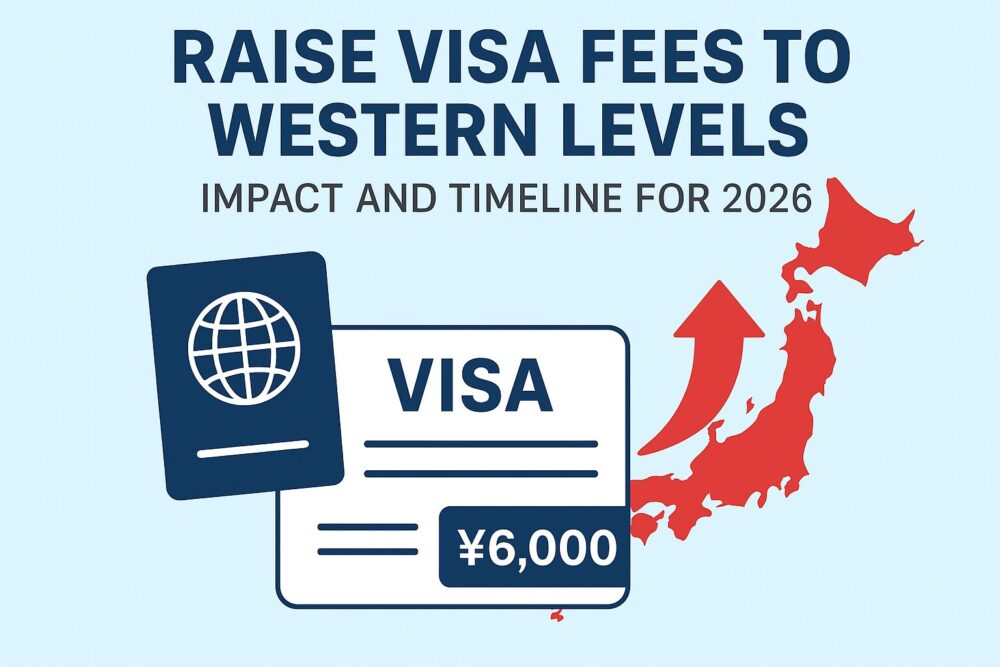The Japanese government plans to raise visa application fees to levels similar to Western countries, targeting implementation as early as fiscal 2026. The increase aims to reflect higher issuance costs and inflation caused by rising inbound tourism and to help curb overtourism.
Overview for prospective international students
The government plans to raise visa application fees to levels closer to Western countries, with changes likely from fiscal 2026 after public consultation in FY2025. For students, this means higher costs may apply to long‑stay student visas and possibly a shift to paying fees at application rather than at issuance.
What changes matter to students right now
- Scope: Long‑stay visas including student visas are included.
- Timing: Changes could take effect from fiscal 2026; public comment is expected in FY2025.
- Collection timing: Authorities are considering charging the fee when you apply (not at issuance), which could change when you must pay.
- Expected direction: Fees will rise from current low levels, so plan for higher visa-related expenses.
Likely financial impact (practical estimate)
- Current baseline (2025 reference): Japan’s multiple-entry/longer-stay fees have been low (single-entry ~¥3,000; multiple-entry ~¥6,000).
- Post-change expectation: Fees could move closer to G7/OECD averages for short-term visas (order of magnitude: tens of thousands of yen), so allowance for a larger student-visa fee is prudent.
- Budget step: Add a contingency of ¥10,000–¥40,000 to your pre-departure budget until the final fee is published.
Immediate actions you should take
- Confirm application deadlines with your school and embassy now; apply before fee changes if possible.
- Contact the accepting university’s international office to ask whether they plan to accelerate COE issuance for applicants impacted by fee timing.
- Monitor the Ministry of Foreign Affairs and your local Japanese consulate pages during FY2025 for the public comment and final ordinance.
- If you rely on scholarship or family support, update your budget to include a higher visa fee and possible upfront payment timing.
- Keep all application receipts and COE paperwork in case of disputes or changes in fee rules.
What to watch for (timeline and sources)
- FY2025: public comment period by the Ministry of Foreign Affairs — read summaries and Q&A released by your consulate.
- FY2026: possible implementation — check the exact effective date and whether fee collection timing changed.
- University guidance updates — they will post student-specific instructions (COE timing, pre-departure checklists, financial documentation).
Source: Nikkei. (2025, October 17). Raise visitor visa fees to “Western levels” Among the lowest in the G7, reflecting higher costs; expected to help reduce tourism-related nuisance.

